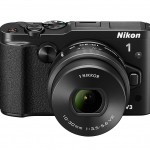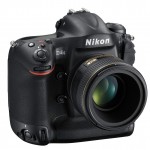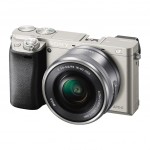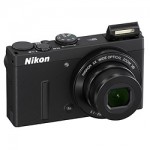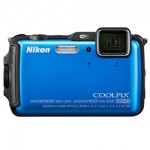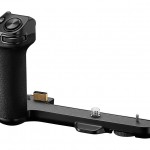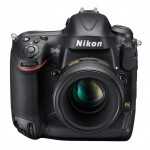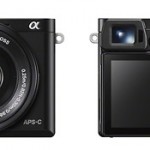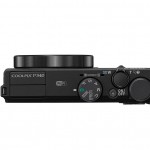Professional photographer, Laurence Chen, has contributed a detailed review of the 20D. I'll post it here a little while and then move it over to the main reviews page. Please feel free to add comments on the review content, structure, your experience with the 20D, etc.
We're getting serious about professional digital camera reviews!
The review:
The Canon EOS 20D:
Digital for the advanced SLR photographer finally comes of ageby Laurence Chen
Digital SLR enthusiasts have been waiting a long time for a digital SLR body that functions comparably to the 35mm SLR bodies of five years ago. The EOS 20D delivers in key areas: consistent focus, exposure, white balance, color rendition, high image quality, and speed of handling. come together in a worthy camera.
The Canon EOS 20D is an 8.2 megapixel digital SLR body that sits between Canon's high-end, professional SLRs and their hot-selling, consumer-focused Digital Rebel (The most recent version of the Rebel XT has just been released in April 2005). For photographers interested in developing their skills or looking for a less expensive alternative to the EOS 1D Series, the 20D is a most capable tool.
At about 66% more than the cost of the Canon's new entry-level Digital Rebel XT, what makes the 20D worth the extra $600? It's all in the details...
Price: Approx. $1400 US (Based on current street price)
Canon EOS 20D Studio Test Images
ISO 100 Sample
ISO 200 Sample >>
ISO 400 Sample >>
ISO 800 Sample >>
ISO 1600 Sample >>
All Canon EOS 20D Photos >>
Post your own Canon EOS 20D Review >>
Pros and Cons
For a change, let's start with the "cons." Why? Because this camera does most things well, it's the limitations that will give you a better understanding of how the EOS 20D measures up against the competition. So, knowing the limitations, you can pretty much assume the 20D will do everything else well enough for most users, including the majority of professional photographers. Bear in mind that not all of these points may apply to you and your style of photography.Cons
- Minimal weather-resistance
- Automatic white balance under tungsten light produces images with too much yellow, particularly in skin tones
- The 1.8" LCD monitor is too small - especially compared to the competition
- Near-focusing with wide angle lenses may be inconsistent (camera may not focus closely enough)
- Image appearance controls for color and contrast (parameters) limited to five steps
- Bounce flash with the Canon 580EX improved but still not consistent enough for those who absolutely need accurate and consistent bounce flash performance
- Relatively obtrusive shutter release (the mirror slapping up and back) sound disturbs wildlife, wedding and other candid photography
- Image sensor smaller than 35mm frame results in the "lens focal-length multiplier" effect of 1.6x (which some consider an advantage)
- Flash-sync limited to 1/250th (but with Canon's HSS feature you can go faster)
Pros
- More consistent autofocus accuracy than predecessor
- Rapid start-up time and buffer/card write speed
- Low shutter lag time
- Excellent battery life
- Larger sensor maintains low noise with higher resolution and high ISO (800-3200) settings
- 5 frames per second capture speed, up to 23 frames at JPEG quality
- High image review magnification (zooming) for checking focus, etc.
- Improved flash metering with 580EX Speedlites
- Good overall color balance, light skin tones fairly accurate, dark/black skin a little less accurate
- PC terminal for use with studio lighting equipment
Introduction
This review is written from a working professional's perspective and thus reflects my own bias toward usability, functionality, and speed as they serve a single purpose: getting the shot in the "real world." In my opinion, a camera characteristic either helps or hinders the photographer from making the kinds of pictures you want to make. Bear in mind this varies from photographer to photographer as well as from subject to subject. However, almost all photography will benefit from better camera design. So real-world camera usability and functionality are good foundations for judging a camera.Features and Design
Canon EOS 20D Key Features:
The benefit of an SLR body over a point-and-shoot camera, besides the interchangeable lens and accessory selection, is the fact that your hand will likely fit the camera more "like a glove". So as a tool, the SLR will generally be more responsive to your physical photographic needs than a non-SLR camera. You lose some convenience and inconspicuousness in the bargain however.
- Rapid start-up and shot-to-shot speed, 5 fps capture-rate
- Hot shoe and PC terminal for off-camera lighting
- Ability to set separate buttons for autofocus activation and shutter release via custom functions
- Compatible with new EF-S lenses for wide angle images
The 20D builds on Canon's long history of ergonomic design and functionality and users with medium to large hands may find Canon a natural fit. People with smaller hands may find the camera a bit large. If you have smaller hands, take a look at the Canon EOS Rebel XT . It sacrifices some functionality but is smaller and will deliver comparable image quality. Compared to the other models in Canon's catalog, the 20D strikes a solid balance between size, heft (weight) and build-quality. Yes, it would be nice to have more metal, but then you'd have more weight to carry around. Yes, it would be nice to make it smaller, but then you wouldn't have the same ergonomics.
Top view of the buttons and controls on the EOS 20D. Command dial with exposure modes in on the left, shutter release, and main control dial are at the right, on top of the grip. The three buttons above the LCD display contol autofocus, white balance, drive, ISO, metering mode, and flash exposure compensation. There's also a button that turns on a light for the LCD. The integration of features and design make the 20D fun to use because you don't have to think as much about what you're doing or what button to push. The rapid start-up time and shooting speed means the camera will respond to fast-moving, fast-changing situations like sports, kids, or wildlife. The hotshoe and PC terminal make using studio strobes easy, as does the camera's compatibility with Canon's own wireless system for their ETTL and ETTL-II enabled EX speedlites (550 EX and 580EX). Having the focus separate (custom function?) from the shutter release is odd at first but quickly allows you to compose and meter for a given scene while focusing away from the focus points such as at the edge of the frame (you focus first with the thumb button and then recompose and meter/capture the image). And finally the new EF-S lenses are high quality glass, purpose-built for digital SLRs. While not quite up to up to "L" lens standards, the new EF-S lenses come at much more affordable prices.
Detail of Canon EOS 20D menu display.
Reviewing an image with basic information displayed
Reviewing an image with histogram displayPerformance and Image Quality
Point-and-shoot vs. 20D vs. Canon EOS 1D Series
Once you've used an SLR for the majority of your photography, going back to a point-and-shoot is an experience in frustration. A limited range of f-stops, no manual focus, shutter-lag... The list of compromises goes on and on. While there are some very capable point-and-shoot digital cameras out there (and they also make great mini-video cameras), serious photographers generally go with SLRs.As I mentioned in my introduction, speed and functionality are the key elements SLRs bring to the table. and The EOS 20D is allows the photographer to take full control of their photographic results. Aside from factors such as weather-proofing and full-sized sensors, you get a good 90% of what the 1D and 1Ds series camera do for a quarter of the price or less. Yes there are things the 1D cameras do better and the sum of their advantages add up to more than they might appear on paper, but for the price the 20D rules the roost. If you can afford a 1D camera and its replacement in two and half years, I say go for it. If you'd rather spend the extra money on Canon's wide variety of lenses and speedlites and other accessories however, the 20D is the answer.
Image Quality
Image quality is excellent, as you would expect from the camera's specs and from comparing sample images here and across the Internet. But let's take a closer look at the EOS 20D sample images . Yes, the image quality of the 1Ds Mk 2 with its 16MP sensor is higher than the 20D's 8.2MP sensor. But it's important to consider the law of diminishing returns. I know one pro photographer who thinks nothing else measures up to the Canon EOS 1Ds. I know another who says it's just more pixels, period. Both are sticklers for detail and have long histories with film and black and white printing. Go figure.So what do you really need? To properly answer this question it's important to consider what you intend to do with your images. If you plan to regularly make 11x16 inch prints and frame them (and the key here is "regularly") for display then consider more pixels. If you like to crop your pictures a lot then consider more pixels. Otherwise, you can successfully upsample the 20D's files as much as 300% or more and get respectable prints. (OK, again I know people who think this is heresy but guess what, they're in the minority and would only be satisfied with large format cameras anyway.) For most people and purposes the 20D's 8.2MP sensor is more than adequate, thank you. Proper image processing and preparation are often more important than resolution.
One of the more subjective elements of image quality is color palette, or color balance. Canon's engineers have to make decisions about just how green to make the grass or how blue to make the sky and how all elements of an image will look when rendered next to one another. Most people seem to feel Canon's color palette is one of the best, with accurate skin tones , good neutrals, and pleasingly balanced reds, greens, and blues.. And that, my friends, really is the end of the story - there is no "correct" color since everyone's brain interprets color differently. Yes, it's possible to measure wavelengths of reflected light and we should all be using calibrated computer monitors. But there are no pure colors in the natural world., In the end, only the scientists care. Humans generally feel that all is well with the world if skintones are pleasing and the sky is a nice bright blue.
Frankly, I feel Canon's skintones are pretty good but I dislike the overall look of their color palette compared to transparency film . Someday, someone will offer a digital plug-in that that replicates Fujifilm's Provia or Velvia slide film color, when I want it, and across all lighti conditions and white balances. (And hey - while you're at it, can you scare up some Kodak E100VS and E100GX plug-ins too? I will pay millionz for these.)
The bottom line: The Canon EOS 20D delivers great image quality, even at high ISO settings. But don't just take my word for it. Trust your own eyes and judgement. Check the shadow areas in the studio samples for noise, the highlights for detail, and look for fine lines at the center and the edges of the image to evaluate resolution as well as consistency.
Camera Experience
As a former Canon EOS 10D user, I think the 20D offers significant improvement in usability. Two areas stand out as reasons to upgrade: focus and speed. The camera has faster, more accurate and more consistent focusing, especially in marginal lighting conditions. And it's much, much faster on start-up and buffer-to-card writing speed (to keep pace with the new five frames-per-second capture-rate).In practical terms, this means that pictures will more likely be in focus (this should be a given, but often isn't) and you can review photos sooner after capture. The EOS 20D's predecessor, the 10D, was notoriously deficient in both these key areas. The 10D focused (and exposed exposure problems?) so unreliably, you had to constantly check focus on the LCD to confirm that you got the shot. And the slow write speed meant you might be standing around waiting 10 or 20 seconds (no kidding!) if you shot a sequence of frames,. Thankfully, Canon's developers have done away with these serious shortcomings, in the EOS 20D.
One area where the 20D has taken a step back, is the loud shutter-release (mirror-slap) sound. If you photograph wildlife, weddings, or musical performances, you know how distracting this seemingly unimportant characteristic can be. It might not bother you, the photographer., But it may be very distracting to your subject(s)! One click of the shutter release and that grizzly bear is looking at you like you're lunch. A few frames and the priest or officiate is glaring at you like you're a terrorist. The 10D's shutter was soft, subtle, and unobtrusive - almost as quiet as a Leica! The 20D... well, you get the picture (or worse - you don't get the picture). Unfortunately, the 1D-Series mirrors aren't any quieter so professional Canon users will have to put up with it for the time being. (I recently used the Rebel XT and its higher-pitched shutter sound seemed notably softer and quieter than the 20D.)
I have a couple more quibbles. The viewfinder information display is somewhat dim and hard to see in bright lighting. I had trouble with it while photographing snowboarders. And an inconsistency in one of the menu controls annoyed me. When setting the image recording quality you must remember to press the "SET" button after selecting the quality level, otherwise the change is not set. All other controls, such as the ISO setting, merely require returning to shooting mode, which happens automatically after a moment, or after pressing the shutter/focus button. Not huge problems but issues to keep in mind, nonetheless.
The new, scrolling joystick handily located just above the big control dial on the back of the camera. The joystick is used to navigate while reviewing images on the EOS 20D. A new feature that's been a pleasure to use is the joystick-like scrolling button just above the rear quick-control dial. This device makes inspecting focus easy and straight-forward. Another nice little touch is the new three position on/off switch which allows you to turn the rear quick-control dial off so it doesn't unintentionally change your exposure setting. Overall, Canon has designed the 20D well--all the buttons you normally need are within easy reach and it's easy to tell which is which by feel alone. Finally, the built-in flash pops up a wee bit higher than before so it can clear Canon's wide-angle lenses/zooms.
Other reviewers and websites have noted the 20D's excellent high ISO performance and noise-reduction capabilities so I won't reiterate those points. As I said, this camera does most things competently (as you'd expect it to). With the EOS 20D, Canon has delivered a solid performer at a reasonable price, for a professional camera.
Conclusion
The main competition for the 20D is most likely its younger sibling, the new (April 2005) Canon EOS Digital Rebel XT--There are two areas of distinction besides build quality (XT is fine, 20D sturdier) and image quality (very similar). The first, and possibly the most important area, is the functionality of the control buttons, menu navigation, and viewfinder magnification. From reading this review you know I put a high priority on ease of use. For a comparable evaluation of the Digital Rebel XT, seefor Michael Reichmann's "on assignment" report about using the Rebel XT in rapidly changing, uncontrolled conditions. The other distinction between the two cameras relates to each camera's image processing defaults. My local Canon rep told me that the Rebel has more aggressive sharpening and he showed me a few 11x16" prints to demonstrate the difference. He said that even when tuned down in the image parameters, the Rebel's sharpening is still relatively strong because consumers who buy digital cameras at this price point like to see sharp images. Advanced photographers want to "tweak-their-own" so Canon takes a less aggressive sharpening approach with the 20D.
So is it worth the extra money for the 20D? My take is absolutely "yes" if you want control. Possibly "no" if you're on a budget and/or want a lighter, smaller, quieter camera to tote along for the ride, and you're willing to compromise for less efficient design and ergonomics.
The 20D offers responsive, direct control for photographers who need to quickly access key features used for fast and creative photography. If you want a tool that responds to your photographic reflexes, the 20D is very close to a transparent tool that becomes a natural part of your body and "disappears" when you're photographing. And, it does so at a fraction of the cost of Canon's big guns, the 1D and 1Ds Mk 2 series. No, it's not a perfect camera. But for digital, it has come a long way and should easily meet most users' needs, including aspiring sports photographers.
The main limitation to the ultimate flexibility of the EOS 20D (and most digital SLRs) is the APS-sized image sensor and its 1.6x crop factor. The crop means that all those great Canon lenses that were designed for 35mm film will be 1.6x longer when used on the EOS 20D* While Canon's new EF-S lenses partially address the issue, it's still a sticking point for those seeking to make full use of Canon's wide arsenal of lenses.
While many pros would only consider the 1D-series camera bodies for serious work, I suggest most working photographers could easily perform 90% of the jobs they're called to do with this EOS 20D. There are few exceptions, such as the practical need for a full-sized sensor to complement specialized Canon lenses like the 14mm f/2.8L USM or the Canon TS-E 24mm f/3.5L. Also, some photographers will benefit from having the ultimate in SLR resolution, the 16 megapixel Canon EOS 1Ds Mark II. But all in all the 20D is a formidable package. Especially if you haven't won eight large from your poker buddies lately...
*This is a simplified explanation of the digital crop factor or ":digital conversion". It's too complicated to explain completely in this review.
Who Should Buy The Canon EOS 20D?
The Canon EOS 20D is a good camera shoice for any serious photographer ready to step up from a high-end compact digital, 35mm SLR owners who want to make the switch to digital, and it will even serve most professional photographers well.-end-
Other Resources:
Canon EOS 20D User Reviews >>
Write a Canon EOS 20D Review >>
Canon EOS 20D Sample Gallery >>
Studio Sample Images >>




 LinkBack URL
LinkBack URL About LinkBacks
About LinkBacks







 Reply With Quote
Reply With Quote
